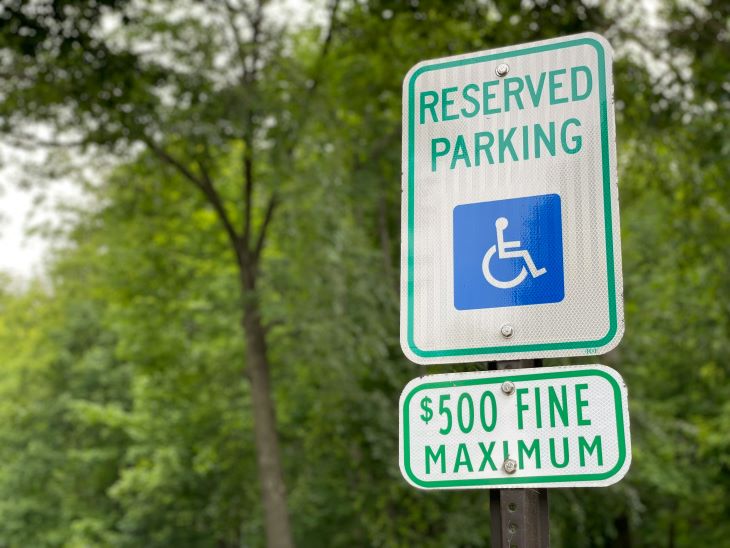Accessibility and inclusivity are fundamental values that every community should uphold. However, it’s evident that the needs of handicapped drivers are frequently overlooked, resulting in barriers that impede their independence and mobility. These challenges not only affect handicapped drivers but often, they are affected by the broader community due to a lack of education or training.
All drivers must be educated on the importance of following laws and regulations related to handicap accessibility. Through proactive initiatives, such as handicap driver education, accessibility awareness training, and promoting disability inclusion, we can empower both handicapped drivers and the wider community.
Understanding Handicap Driver Education
Handicap driver education empowers individuals with disabilities to navigate roads safely and confidently. This specialized form of education encompasses a wide range of skills and knowledge tailored to the needs of each driver. For example, it covers the operation of vehicles with modified controls, such as hand controls for acceleration and braking, or adaptive steering systems. Handicapped driver education may also include training on how to utilize wheelchair lifts or ramps for accessing vehicles, ensuring drivers can seamlessly transition from their wheelchairs to the driver’s seat with ease.
Handicap driver education also goes above these technical skills and into understanding traffic laws and regulations specific to drivers with disabilities. This could include learning how to communicate effectively with law enforcement or emergency responders in case of an incident, or understanding how to safely interact with pedestrians and cyclists in shared spaces.
This type of education empowers individuals with disabilities to achieve greater independence and mobility, so they can navigate the roads with confidence.
Incorporating Accessibility Awareness Training
Accessibility awareness training is a multifaceted approach that extends far beyond the technical and law aspects of driving adapted vehicles. It means going above and beyond to understand accessibility challenges faced by individuals with disabilities and the importance of creating and respecting inclusive environments. This training enlightens drivers about the various barriers that people with disabilities encounter daily, whether it’s navigating physical obstacles in public spaces, accessing public transportation, or facing societal misconceptions and stereotypes.
Accessibility awareness training also fosters a culture of empathy and understanding among drivers. For example, by immersing student drivers in scenarios that simulate the experiences of individuals with disabilities, such as using mobility aids or navigating inaccessible environments, they can gain a newfound perspective on the daily struggles faced by handicapped drivers. It may be an experiential learning approach that could cultivate empathy, encouraging drivers to consider the needs of others and become advocates for accessibility and inclusion in their communities.
Promoting Disability Inclusion
Promoting disability inclusion is not just about creating accessible infrastructure; it’s about fostering a culture of acceptance and support for individuals with disabilities. When individuals with disabilities can fully participate in various aspects of life, they become active contributors to their communities. Handicapped drivers bring unique perspectives, talents, and experiences to the table, enriching the social fabric with diversity and innovation. Whether it’s through employment, volunteerism, or civic engagement, their contributions enhance the collective well-being and vitality of society.
Overcoming Challenges and Building Support
Despite the importance of handicap driver education and accessibility awareness training, there are still challenges to overcome. Limited resources, outdated infrastructure, and social stigmas are just a few of the obstacles that handicapped drivers face daily. However, by building support from government agencies, advocacy groups, and the community at large, we can work together to overcome these challenges and create a more inclusive society.
Government Initiatives and Policy Changes
Government initiatives and policy changes help advance the rights and opportunities of handicapped drivers and promote broader disability inclusion. These initiatives can encompass a range of measures to address barriers and foster a more accessible and equitable environment for individuals with disabilities.
One significant area of government action involves funding allocation for accessible transportation options. This funding may support the expansion of paratransit services, which provide door-to-door transportation for individuals with disabilities who are unable to use fixed-route public transportation. Additionally, government funding can be directed towards the purchase of accessible vehicles, such as wheelchair-accessible vans, or the installation of accessibility features in public transportation infrastructure, such as ramps and lifts on buses and trains. Handicap driver education should include a basic knowledge of government and policy changes so the community not only learns about the advantages and disadvantages but also how to get involved.
The Role of Advocacy Groups and Nonprofit Organizations
Joining advocacy groups or volunteering with nonprofit organizations can also empower handicapped drivers and promote disability inclusion. These organizations work tirelessly to raise awareness, provide resources, and advocate for policy changes that benefit individuals with disabilities. By supporting these groups through donations, volunteer work, and community engagement, we can amplify their impact and create meaningful change.
Educating the Next Generation
Empowering handicapped drivers through education is not just about supporting current drivers; it’s also about educating the next generation of drivers and fostering a culture of inclusivity from a young age. While it’s not universally mandated, some driver education programs do include disability awareness and accessibility training as part of their curriculum. This training can be valuable in educating drivers about the diverse needs of individuals with disabilities and how to interact with and accommodate them on the road. However, the extent and depth of this training can vary depending on the program and its focus.
Promoting Education
Empowering handicapped drivers through education is a multifaceted endeavor that requires collaboration, dedication, and a commitment to inclusivity. By prioritizing handicap driver education, accessibility awareness training, and promoting disability inclusion, we can create a more responsible society where all individuals have the opportunity to be independent drivers.
Featured image by Kimberly Farmer on Unsplash.



